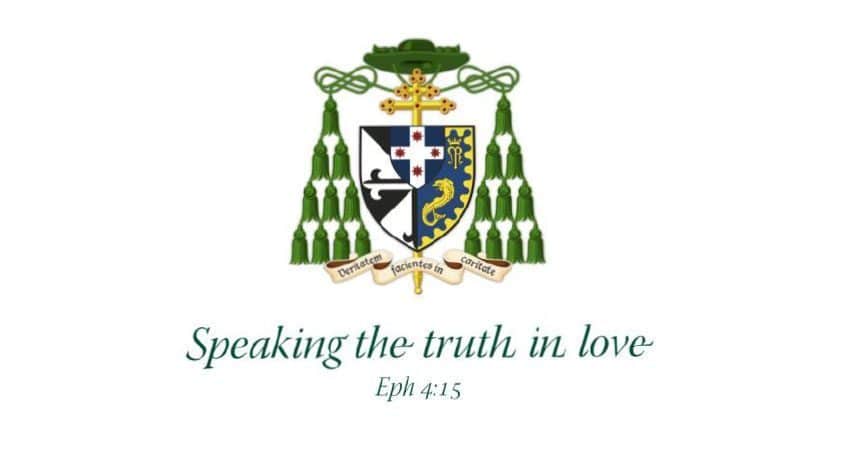Good Friday Celebration of the Passion of the Lord St Mary’s Cathedral, Sydney

Good Friday Celebration of the Passion of the Lord
St Mary’s Cathedral, Sydney
There are many versions of the story. Famously rediscovered by St Helena in the year 326, the Cross of Christ had been an object of devotion from the earliest times.1 The pilgrim Egeria recorded that already in 380 the faithful in Jerusalem lined up on Good Friday to reverence a relic of the True Cross.2 And the Second Council of Nicaea in 787 declared that wood the greatest of relics or holy images which we venerate, not out of idolatry but in worship of Him who hung upon the Cross. But where did it come from?
In some folklore, timber from the Tree in the Garden of Eden was used in Noah’s ark, for Moses’ rod, for the ark of the covenant, for Solomon’s Temple and for Jesus’ crib; some even claimed the young Jesus in Joseph’s workshop, wittingly or unwittingly lathed the cross-bar for His own future cross that the Romans would make Him carry. Some said it was from the aspen or trembling poplar, whose leaves still shiver in the breeze out of shame.
By the Middle Ages the most common version of the story was that Adam’s son Seth planted a cutting from Eden’s Tree on his father’s grave; it flourished until Solomon’s time.3 When the Queen of Sheba visited him, she fell on her knees before it, having a premonition that the Saviour of the world would be hanged on the tree and establish a new covenant between God and humanity. Solomon, fearing this would mean an end for the Jews, had it cut down and buried in Jerusalem. There it long lay at the bottom of the Pool of Bethesda giving the water healing powers (Jn 5:1-9). But as the time of Christ’s Passion approached the wood floated to the surface and was recovered for use as the upright of the Cross. Thereby the very tree at which humanity was cursed in Eden was to become a source of healing, not just for the lucky few at Bethesda but for all who look upon the Cross, and quake, and adore.
Last year I suffered a terrible illness that left me totally paralysed, wracked in pain and completely dependent on others. I found myself with Jesus, helpless, humiliated and suffering. I cried out with Him to our Father-God.
At one time or another we all face serious challenges. Misery loves company, they say; knowing Jesus was “a Man of Sorrows, familiar with suffering” (Isa 52:13-53:12; Heb 4:14-6; 5:7-9; Mt 20:28) is some comfort in our trials. But what we really seek is more than sympathy: we want happiness and wholeness. We need the man Jesus suffering beside us to show He is also the God who can heal us. And so He says to us today, “Yes, I am a King, though not of this world; a witness to the Truth amidst all the falsehood; a ransom for the sins of many; the Saviour in whom it is accomplished.” (Jn chs 18 & 19)
At Easter we will receive confirmation of those claims. But as we creep to the cross today, we recall that God might have saved us in many ways – might have brought life where the sin at Eden’s tree brought death, might have brought reconciliation where the Middle East of Solomon and ISIS knows so much hate, might have brought healing for many more than those at Bethesda – without dying. There are many ways God might have saved us, but the way He chose was the unique and all-sufficing sacrifice of Jesus, His total self-gift on the Cross. We in turn must take up our crosses and follow Him (Mt 16:24). So “behold the wood of the Cross on which hung the salvation of the world: come let us adore.”

